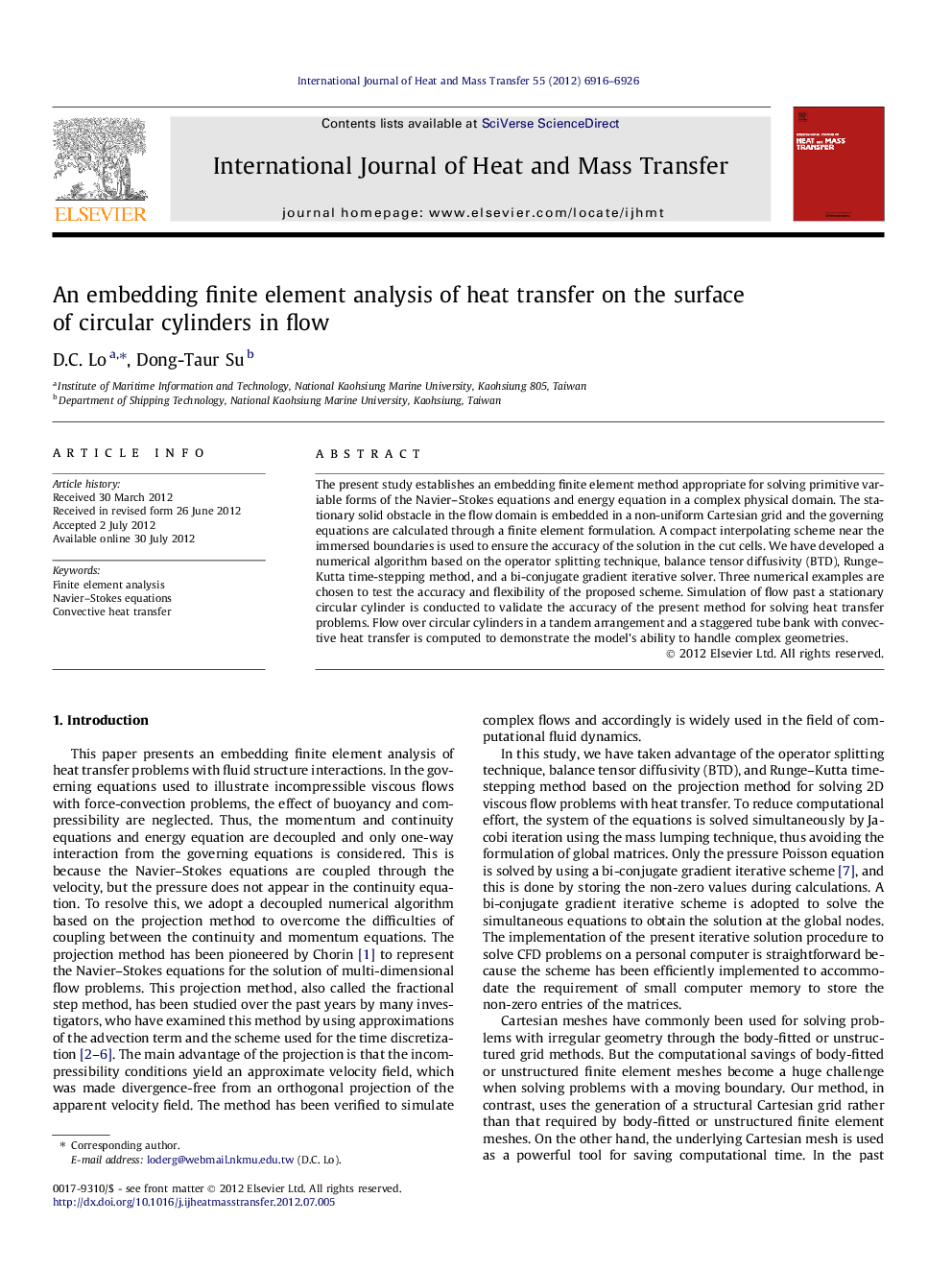| Article ID | Journal | Published Year | Pages | File Type |
|---|---|---|---|---|
| 658721 | International Journal of Heat and Mass Transfer | 2012 | 11 Pages |
Abstract
The present study establishes an embedding finite element method appropriate for solving primitive variable forms of the Navier-Stokes equations and energy equation in a complex physical domain. The stationary solid obstacle in the flow domain is embedded in a non-uniform Cartesian grid and the governing equations are calculated through a finite element formulation. A compact interpolating scheme near the immersed boundaries is used to ensure the accuracy of the solution in the cut cells. We have developed a numerical algorithm based on the operator splitting technique, balance tensor diffusivity (BTD), Runge-Kutta time-stepping method, and a bi-conjugate gradient iterative solver. Three numerical examples are chosen to test the accuracy and flexibility of the proposed scheme. Simulation of flow past a stationary circular cylinder is conducted to validate the accuracy of the present method for solving heat transfer problems. Flow over circular cylinders in a tandem arrangement and a staggered tube bank with convective heat transfer is computed to demonstrate the model's ability to handle complex geometries.
Related Topics
Physical Sciences and Engineering
Chemical Engineering
Fluid Flow and Transfer Processes
Authors
D.C. Lo, Dong-Taur Su,
